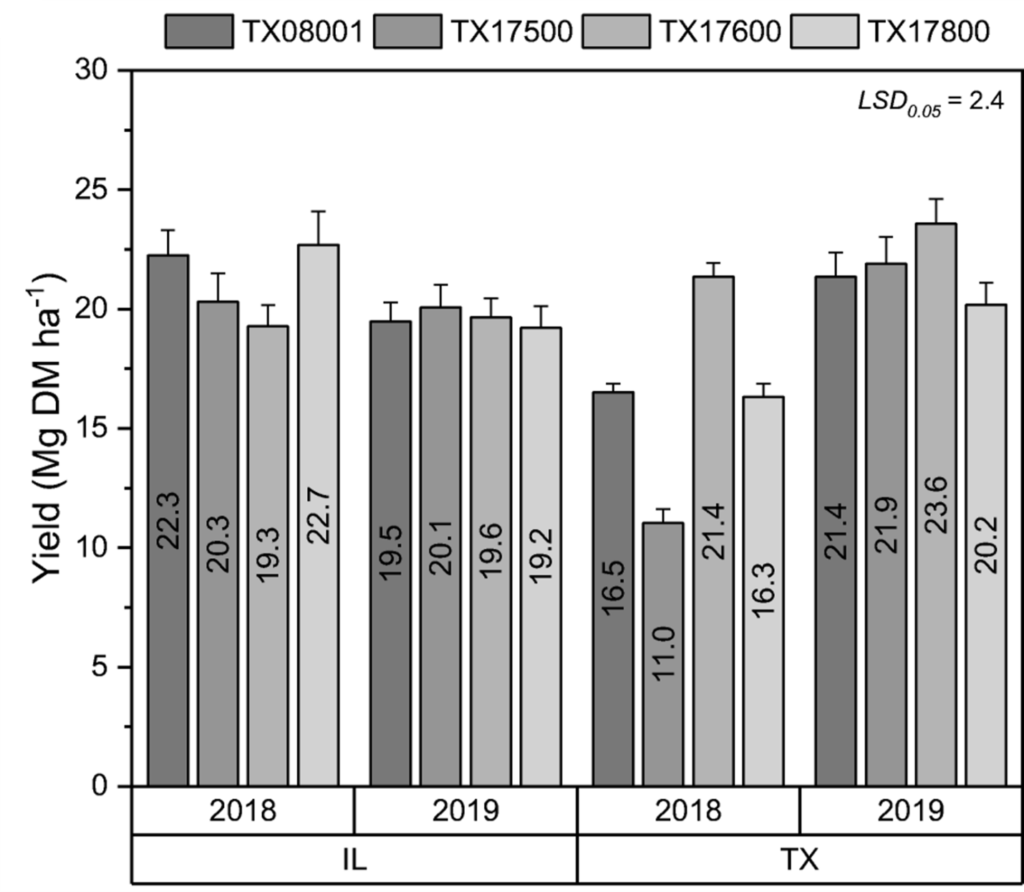Genotype-Environment-Management Interactions in Biomass Yield and Feedstock Composition of Photoperiod-Sensitive Energy Sorghum
Themes: Sustainability
Keywords: Biomass Analytics, Field Data
Citation
Schetter, A., Lin, C.H., Zumpf, C., Jang, C., Hoffman, L., Rooney, W., Lee, D.K. March 17, 2021. “Genotype-Environment-Management Interactions in Biomass Yield and Feedstock Composition of Photoperiod-Sensitive Energy Sorghum.” BioEnergy Research. DOI: 10.1007/s12155-021-10272-6.
Overview

Recently introduced photoperiod-sensitive (PS) biomass sorghum (Sorghum bicolor L. Moench) needs to be investigated for yield potential under different cultivation environments with reasonable nitrogen (N) inputs. The objectives of this study were to (1) evaluate the biomass yield and feedstock quality of four sorghum hybrids with different levels of PS ranging from very PS (VPS) hybrids and to moderate PS (MPS) hybrids, and (2) determine the optimal N inputs (0~168 kg N ha−1) under four environments: combinations of both temperate (Urbana, IL) and subtropical (College Station, TX) regions during 2018 and 2019. Compared to TX, the PS sorghums in central IL showed higher yield potential and steady feedstock production with an extended day length and with less precipitation variability, especially for the VPS hybrids. The mean dry matter (DM) yields of VPS hybrids were 20.5 Mg DM ha−1 and 17.7 Mg DM ha−1 in IL and TX, respectively. The highest N use efficiency occurred at a low N rate of 56 kg N ha−1 by improving approximately 33 kg DM ha−1 per 1.0 kg N ha−1 input. Approximately 70% of the PS sorghum biomass can be utilized for biofuel production, consisting of 58-65% of the cell-wall components and 4-11% of the soluble sugar. This study demonstrated that the rainfed temperate area (e.g., IL) has a great potential for the sustainable cultivation of PS energy sorghum due to their observed high yield potential, stable production, and low N requirements.